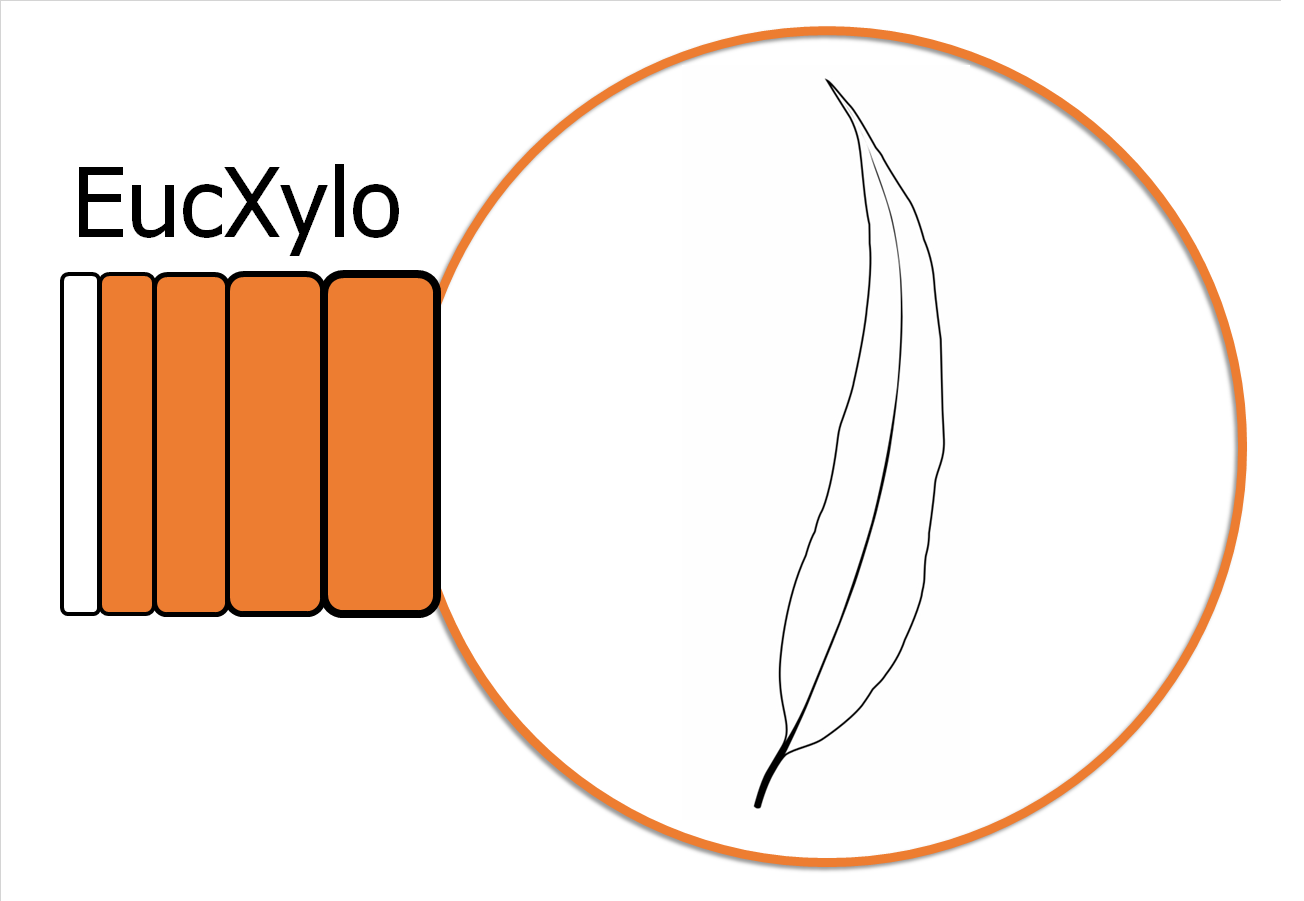
The Hans Merensky Chair in Advanced Modelling of Eucalypt Wood Formation
Understanding xylogenesis in the world's most widely planted hardwood species
[:en]Handheld device gives wood scientists an edge[:]
[:en]
Post authored by Engela Duvenage
‘Pacman’ is keeping those part of the Hans Merensky Research Chair in Advanced Modelling of Eucalypt Wood Formation quite busy these days. It’s not all fun and games, though, but in the name of plant science. ‘Pacman’ is the nickname given by Stellenbosch University students to the top of the range Licor 600 porometer they use to study the influence of aspects such as seasonality and droughts on wood formation in Eucalyptus trees.
 Photo: Chris Tonkin, one of the M.Sc. students, using the Licor 600. He is co-supervised by Dr Dave Drew and Prof Guy Midgley of the SU Department of Botany and Zoology. Tonkin is studying the carbon allocation strategies that two different eucalypt varieties use. Photo by Engela Duvenage.
Photo: Chris Tonkin, one of the M.Sc. students, using the Licor 600. He is co-supervised by Dr Dave Drew and Prof Guy Midgley of the SU Department of Botany and Zoology. Tonkin is studying the carbon allocation strategies that two different eucalypt varieties use. Photo by Engela Duvenage.
The nickname, which hints at a gobbling video game character, was given in reference to the shape of the device’s “mouth” in which a researcher can place a leaf to take a reading. The method is non-destructive.
Most of the contingent of eleven postgraduate students and postdoctoral fellows associated with the EucXylo Chair have or will use it in their research work. The Chair recently acquired the device in partnership with Prof Guy Midgley of the Department of Botany and Zoology, who studies matters related to climate change.
“We have the 18th unit sold worldwide. As far as we are aware, we are the first research group in South Africa who are working with it other than for demonstration purposes,” says EucXylo research leader, Dr Dave Drew, a senior lecturer in the SU Department of Forestry and Wood Science.
Based in the Department of Wood and Forestry Science at Stellenbosch University, EucXylo is funded by the Hans Merensky Foundation. Its focus is on understanding and interpreting wood formation in plants known as the eucalypts, a commercially significant group of hardwoods widely used within the South African forestry sector. Funding made available to the Chair has already allowed for the co-funding of such equipment as the Licor 600 porometer, new laboratory facilities in the Department of Forestry and Wood Science and the appointment of a new technical staff member.
Dr Drew says the handheld, battery-operated instrument makes it easier for students to take rapid measurements in the field or in other places where they would like to monitor plant responses to environmental conditions, such as in our outdoor nursery.
“It helps us to make a multitude of measurements within minutes under natural or ambient conditions. It works extremely fast compared to other pieces of equipment. This significantly improves data collection”, says Alta Saunders, who is pursuing a Ph.D. in Forestry Science. Saunders uses the Licor 600 as part of her efforts to build models with which to understand how Eucalyptus trees respond to drought situations, how they recover and the role of stomatal conductance in all of this.
Stomatal conductance in plants refers to the degree to which the tiny stomatal openings on especially leaves are open (or not). Plant scientists use it as a measure of a plant’s water status. That’s because the stomata in leaves close in times of drought to curb gas exchange through its CO2 uptake and water loss.
Other students in the Chair use the Licor’s built-in fluorometer to pick up fluorescence emitted from the chlorophyll in plants. This tells scientists a great deal about how plants produce energy during the process of photosynthesis.
“By measuring stomatal conductance and chlorophyll fluorescence we are able to understand better how plants respond to changes in environmental conditions. It also gives us insight as to whether the plant is experiencing any stress,” explains Saunders.
It is helping M.Sc. student Chris Tonkin gain insight into how carbon sequestration is influenced by drought. That is because stomatal responses also reflect how plants sequester carbon and how this is affected by drought.
“This is especially important in light of climate change, since eucalypts could potentially be a valuable part of the solution for removing CO2 from the atmosphere. Drought frequencies and/or intensities are, however, expected to increase due to climate change and it is important to understand how carbon uptake (gas exchange) and production is affected by drought,” adds Saunders.
In related work, Ph.D. student Rafael Keret is looking at wood formation and the genes being expressed during drought. The Licor 600 is helping him determine how severe the drought treatments are that he is applying to the plants he is tending at the on-site nursery at the Department of Forestry and Wood Science.
As part of his Ph.D. in Forestry Science and Natural Resources Sciences, Mpilo Khumalo is using it in his comparative study of the wood properties of four Eucalyptus varieties, and how aspects such as seasonality and sap flow influence wood formation.
See the EucXylo ‘projects’ page to learn more about the respective student’s ongoing projects.
[:]